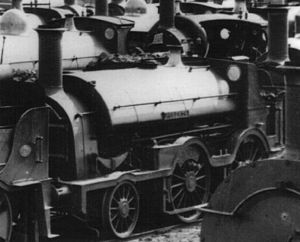
A Fairlie locomotive is a type of articulated steam locomotive that has the driving wheels on bogies. The locomotive may be double-ended or single ended. Fairlies are most famously associated with the Ffestiniog Railway in North Wales.
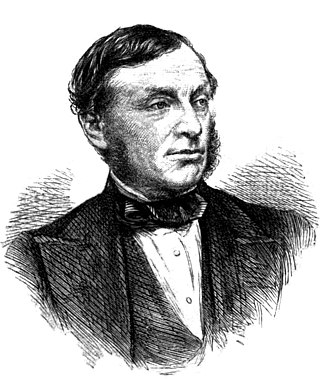
Sir Daniel Gooch, 1st Baronet was an English railway locomotive and transatlantic cable engineer. He was the first Superintendent of Locomotive Engines on the Great Western Railway from 1837 to 1864 and its chairman from 1865 until his death in 1889.

The first Locomotives of the Great Western Railway (GWR) were specified by Isambard Kingdom Brunel but Daniel Gooch was soon appointed as the railway's Locomotive Superintendent. He designed several different 7 ft 1⁄4 in broad gauge types for the growing railway, such as the Firefly and later Iron Duke Class 2-2-2s. In 1864 Gooch was succeeded by Joseph Armstrong who brought his standard gauge experience to the workshops at Swindon. To replace some of the earlier locomotives, he put broad gauge wheels on his standard gauge locomotives and from this time on all locomotives were given numbers, including the broad gauge ones that had previously carried just names.

The Great Western Railway Metropolitan Class2-4-0T broad gauge steam locomotives with condensing apparatus were used for working trains on the Metropolitan Railway. The equipment was later removed, though the class continued to work suburban trains on GWR lines in London. The class was introduced into service between June 1862 and October 1864, and withdrawn between June 1871 and December 1877.
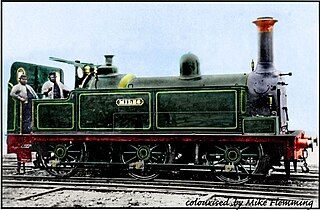
The Great Western Railway Sir Watkin Class were 0-6-0T broad gauge steam locomotives. They were designed for working goods trains through to the underground Metropolitan Railway in London. This class was introduced into service between December 1865 and the last was withdrawn at the end of the GWR broad gauge in May 1892. They were all named after directors and senior officers of the railway.
The Great Western Railway Swindon Class were broad gauge 0-6-0 locomotives built for goods train work. This class entered service between November 1865 and March 1866, and were withdrawn between June 1887 and the end of the GWR broad gauge in May 1892. The entire class was sold to the Bristol and Exeter Railway between July 1872 and September 1874 and were numbered 96-109, but returned to the GWR when that railway was absorbed. The locomotives were then renumbered 2077-2090; their names were not restored.

The Firefly was a class of broad gauge 2-2-2 steam locomotives used for passenger services on the Great Western Railway. The class was introduced into service between March 1840 and December 1842, and withdrawn between December 1863 and July 1879.

The Great Western Railway Sun Class were 2-2-2 broad gauge steam locomotives for passenger train work. This class was introduced into service between April 1840 and January 1842, and withdrawn between January 1864 and June 1879.

The Avonside Engine Company was a locomotive manufacturer in Avon Street, St. Philip's, Bristol, England between 1864 and 1934. However the business originated with an earlier enterprise Henry Stothert and Company.

The South Devon Railway 0-4-0 locomotives were small 0-4-0 broad gauge locomotives operated on the South Devon Railway, Cornwall Railway, mainly on the dockside lines around Plymouth.
The Eagle class were sixteen 4-4-0ST broad gauge locomotives operated on the South Devon Railway (SDR), Cornwall Railway (CR) and associated adjacent railways. They were designed for passenger trains on this steep and sharply curved line but were also used on goods trains when required.
The Gorgon class were six 4-4-0ST broad gauge locomotives operated on the South Devon Railway, Cornwall Railway and West Cornwall Railway. They were designed for passenger trains on this steep and sharply curved line but were also used on goods trains when required.

The Leopard class were four 4-4-0ST broad gauge locomotives designed for passenger trains but were also used on goods trains when required. They were built by the Avonside Engine Company for the South Devon Railway, but also operated on its associated railways. Although designed for easy conversion to standard gauge this was never carried out.
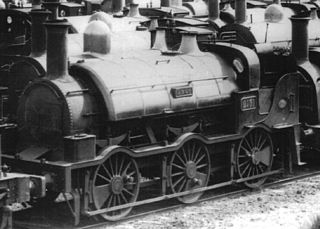
The eight Dido class locomotives were 0-6-0ST broad gauge locomotives operated on the South Devon Railway and Cornwall Railway and associated other adjacent railways. They were designed for goods trains but were also used on passenger trains when required.
The 26 Bristol and Exeter Railway 4-4-0ST locomotives were broad gauge 4-4-0ST steam locomotives. They first entered service in 1855 and the last was withdrawn in 1892. The Bristol and Exeter Railway was amalgamated into the Great Western Railway on 1 January 1876.
The Daniel Gooch standard gauge locomotives comprise several classes of locomotives designed by Daniel Gooch, Superintendent of Locomotive Engines for the Great Western Railway (GWR) from 1837 to 1864.
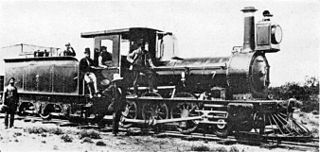
The Cape Government Railways 1st Class 2-6-0 of 1876 by Beyer, Peacock and Avonside was a South African steam locomotive from the pre-Union era in the Cape of Good Hope.

The South Australian Railways E class was a class of 2-4-0 steam locomotives acquired to work passenger and goods train services on the South Australian Railways broad gauge system.

